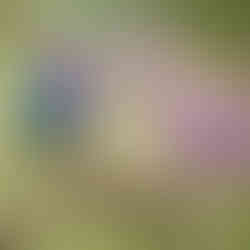Is Seeing Believing?
- Robin Nichols

- Oct 17, 2024
- 4 min read
I recently noted a software update with WIX, the company that produces this excellent blogging and website software. The update involved the installation of artificial intelligence (AI) to be used for re-phrasing existing copy, writing new web pages and blog posts or even for creating new images for those posts.
I consider AI to be something of a lurking monster that's going to create more problems in our lives than benefits (if it hasn't already happened). That said, it's different if you develop and license AI yourself, in which case there's a massive amount of money to be made. And we all know that when there's a massive amount of money to be made, privacy, rights, regulation and often the rule of law goes right out the window. You just have to look at the gambling industry in this country: casinos, horse racing - any high level sport for that matter, to see where things can, and do, go horribly wrong. Back to my AI image creation feature. I typed 'chacma baboon against an African sunset' and up popped the image you see, top right. Top left and centre are my images shot on location - RAW files with very little post production manipulation.
Above: Here's one of my first attempts to create something from nothing. I typed in 'Lilac-breasted Roller in Africa' and one of these pictures was the result. The other two are real Lilac-breasted Rollers - the photos were taken in Botswana. As with the AI baboon sunset example, it's really quite hard to distinguish the 'real' ones from the 'fake' one. So how does AI work?
In the example of image creation generated from a text prompt, many sophisticated processes are put into play. The text input is examined in great detail and on many levels - it's always better to be as detailed as possible in your initial description. AI looks for relationships between words - this is called semantic understanding - and then it tries to visualise how those words might look, either by selecting an image or blending multiple images into one picture that best answers your question. AI generators have multiple components - machine learning and neural networks to name just two processes - and varies slightly between different AI generators - if I were to use ChatGPT I'd get a different result using the same text input I used above. Clearly not all AI generators are the same. Even so, typing 'lilac-breasted roller' into the WIX application has produced a frighteningly realistic result.
When AI-generated imagery is used publicly I really hope that regulators keep on top of the technology before it inveigles itself into every aspect of our lives, if it hasn't done so already. Many might consider AI to be a Godsend - and to be sure, AI can and does, make some everyday tasks appear easier: filling in forms, creating web and blog content and magazine articles or directing online enquiries, for example. I can even use AI to correct and style the words written here (I chose not to).
Improving my grammar is one possible benefit - although you might be mindful about those skills being sourced from a culture that's alien to your own - but let's not get into the differences between UK English and Australian or American English here. Life's too complicated already.

In my opinion the copyright for AI generated images is something few people agree upon. The current thinking is that the copyright belongs to the human that asked for a specific image to be created, especially if the prompt is in-depth and complex. But then there are a lot of very 'grey' areas in connection with AI content. For example, with where the samples images come from, who owned them (originally) and even if that image sample was legally obtained (and not just copied from the internet). For example, a recent news item revealed that a number of car manufacturers were actively collecting vehicle and driver information - via the onboard computer and cameras - while not exactly making the data gathering process apparent to the vehicle owners. AI can be very intrusive especially in situations where the source is hard to police.
Recent legislators should have the power to force all AI generated material - photographs, illustrations, text, whatever, to be labelled as such. If this doesn't happen how are we to know what we see or read is genuine or true? Maybe the boat has already sailed in this regard?
We already know the dangers that unregulated photo manipulation can have on individuals, organizations or even governments. For years heavily photoshopped models set the fashion standard for each new unsuspecting generation of consumer wannabe's. Video and still image deepfakes are now at a quality level where it's almost impossible to distinguish what's real and what's not.

Aside from the tidal wave of AI-generated fakery already swamping the media landscape, artificial intelligence is a threat to the livelihoods of many: professional and amateur photographers, writers, journalists, authors, teachers - it's a long list. Imagine submitting AI generated images to an image library, or submitting an AI picture to illustrate a magazine article, or perhaps entering AI photos in a photo competition. The reality is that this is probably already happening while the rest of us are blissfully unaware of what's going on.
A different kind of digital fakery? Real picture at left and, at right, the same image treated using one of Dynamic Auto Painter's many artistic pre-sets. By copying an image, then changing its fundamental qualities, like adding brushstrokes and a paint texture might be enough to say it is now 'yours'.

As a final note, here's another AI generated composite. 'Pretty African woman fishing with a hippo in the background'. A simple enough request - there is an African woman, she is fishing and there's a hippo in the background. But...


















Comments